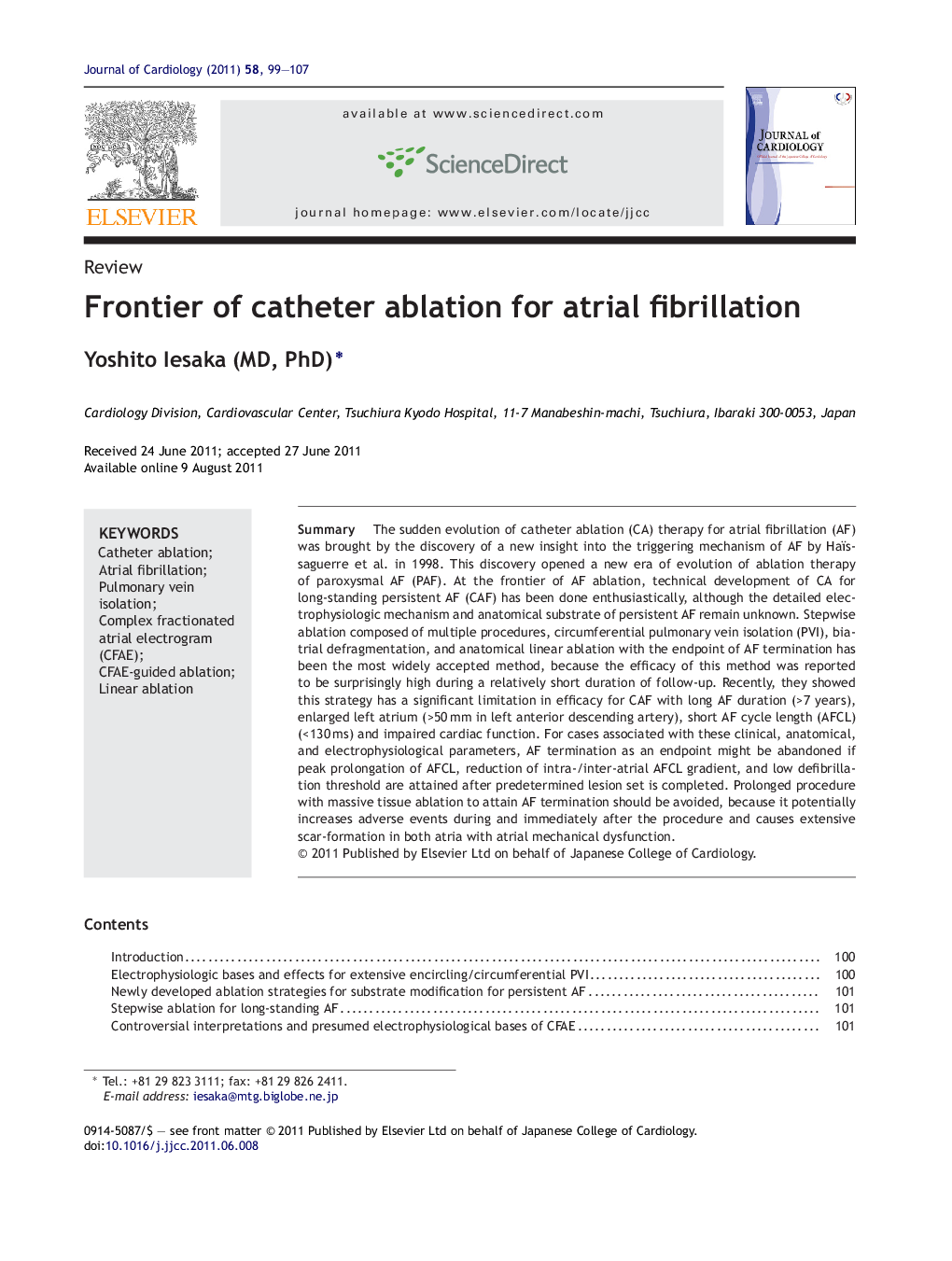| Article ID | Journal | Published Year | Pages | File Type |
|---|---|---|---|---|
| 2963353 | Journal of Cardiology | 2011 | 9 Pages |
SummaryThe sudden evolution of catheter ablation (CA) therapy for atrial fibrillation (AF) was brought by the discovery of a new insight into the triggering mechanism of AF by Haïssaguerre et al. in 1998. This discovery opened a new era of evolution of ablation therapy of paroxysmal AF (PAF). At the frontier of AF ablation, technical development of CA for long-standing persistent AF (CAF) has been done enthusiastically, although the detailed electrophysiologic mechanism and anatomical substrate of persistent AF remain unknown. Stepwise ablation composed of multiple procedures, circumferential pulmonary vein isolation (PVI), biatrial defragmentation, and anatomical linear ablation with the endpoint of AF termination has been the most widely accepted method, because the efficacy of this method was reported to be surprisingly high during a relatively short duration of follow-up. Recently, they showed this strategy has a significant limitation in efficacy for CAF with long AF duration (>7 years), enlarged left atrium (>50 mm in left anterior descending artery), short AF cycle length (AFCL) (<130 ms) and impaired cardiac function. For cases associated with these clinical, anatomical, and electrophysiological parameters, AF termination as an endpoint might be abandoned if peak prolongation of AFCL, reduction of intra-/inter-atrial AFCL gradient, and low defibrillation threshold are attained after predetermined lesion set is completed. Prolonged procedure with massive tissue ablation to attain AF termination should be avoided, because it potentially increases adverse events during and immediately after the procedure and causes extensive scar-formation in both atria with atrial mechanical dysfunction.
